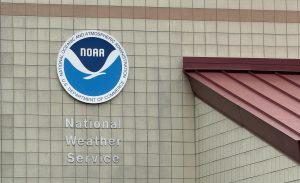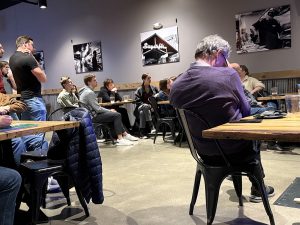
Meteorologists know the importance of planning around the weather. In today’s world, there’s always some new technology or innovation that helps with accuracy when it comes to forecasting. It takes a team of people to recognize when something new is needed to ensure the safety of the public, and meetings are one way this collaboration can happen.
The American Meteorological Society (AMS) has local chapters across the country, with one in the greater St. Louis area. Once a year, the chapter hosts a meeting between two of the largest meteorology schools in the state: the University of Missouri and St. Louis University. The colleges take turns hosting the meetings, so visits take place in either Columbia or St. Louis.
These meetings give students from both universities a chance to see how things operate within the other school and its meteorology program. Professional meteorologists, both from the broadcast and private sector, also come to these meetings to collaborate and talk about recent technology changes. Students have a chance to talk to these meteorologists, too. At the end of the meeting, a presentation takes place to discuss how the new technology has either been helpful or useless for forecasting.
This year’s meeting was held in St. Louis, where students, faculty and other meteorologists gathered to discuss the EF-3 tornado that happened in St. Louis in May of this year. The recent meeting showcased the innovations that helped the NWS meteorologists issue the tornado warning in time for the May 16 storm, especially since the tornado was heading toward a densely populated area. Forecasts that took place a couple of hours before the storm touched down had a tornado threat farther south of St. Louis, but leading up to the tornado warning, meteorologists were able to catch the increased tornado risk in the area 30 minutes before touchdown, thanks to a new severe map that the Storm Prediction Center created recently.
Eric Aldrich, an assistant teaching professor in meteorology at Mizzou, shared the importance of these meetings.
“My favorite part is just the opportunity to see our Mizzou students meet professional meteorologists,” said Aldrich. “And just to see them talk and ask questions and learn. All of our students certainly learn in our meteorology classrooms, but it’s a different kind of learning when you can meet and talk with real professionals that use what we learn in the classroom every day.”
The event each year becomes a networking experience for students at both universities. Even if they’re not sure what career field in meteorology works best for them, just being able to speak to professionals is something that they can take from these meetings.

“It’s my first taste to get to actually talk to actual meteorologists and break the gap of being nervous to talk to people,” said Maggie Dyer, a senior environmental sciences major at Mizzou. “After going, I realized they’re just people like me. It helped so much with the fear of talking, and it’s a good place to practice in a non-formal setting.”
Jack Favazza, the outreach chair for the Greater St. Louis AMS chapter and a sophomore at St. Louis University, enjoys these meetings also because of the networking.
“Community is a part of it,” said Favazza. “Interacting with different members and different schools, and how they look at things from different perspectives. It’s a broad community, and it’s more than just students. I also love the community within St. Louis as a whole.”
Scott Connell, chief meteorologist at KSDK in St. Louis, also frequently attends the meetings.
“We all learn something,” said Connell. “There are so many different aspects to choose and learn from in meteorology. We’re able to have some fun, socialize and most importantly, get to learn about different things and new innovations within the weather community.”
This community aspect will become even more important in the future; St. Louis University has announced the school is phasing out its meteorology program, making the recent freshmen class the last one to study the major.
“It’s very sad,” said Favazza. “I’m thankful for the legacy and hope the weather community stays strong at SLU.”
This story was written by a student in AGSC_COM 2150, which gives students the opportunity to explore public relations and journalistic writing with real-world experience in CAFNR.